Before the landscape architects of the 20th century followed their architecture colleagues and looked away from historical references for their inspiration, garden design tended to be solely about decoration, ornamentation and the cultivation of plants. While many garden layouts still reflect the homeowner’s or designer’s passion for horticulture, others reflect the yard or garden as a valuable living space. The garden can function on all levels with a bit of thought and careful design, from accommodating recreation and relaxation to providing fruit and vegetables for the family. Let’s look at functionalism, a principle of architecture and design that follows the doctrine “fit for purpose,” to get us started.
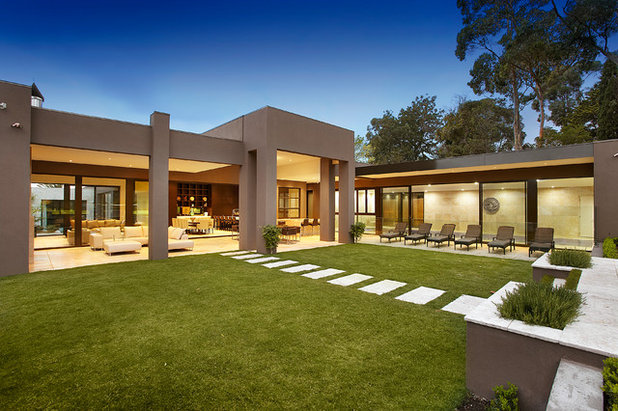
Bagnato Architects
To set us on the right path to creating a functional garden in the true sense, it is worth starting with three points highlighted by the Swedish Garden Architects’ Association in the 1930s, the period when the modernist movement in architecture ignited landscape architecture professionals to look at garden design in a new way.
1. The functional garden avoids both the classicism of the formal garden and the imitation of nature in wild-style gardens. When we use more rational design for the garden layout, the result is spaces more suited to rest and recreation. The garden becomes linked to the lifestyle requirements of its owner.
2. When we create a design suited to the function of the garden space, there is no need to follow historical styles, create symmetry or add decoration. Space in the garden should always have purpose and not just be filled with ornamentation. Any decoration should take its form from its function.
3. Paths and walkways should be reduced to a minimum, serving only to move people through the garden. Plants abutting paths should be allowed to grow with freedom to overlap, helping to unite planting and hardscape. Trees should not overpower the design and should be planted only where there is a need for the function of the garden, such as shading or fruit production.
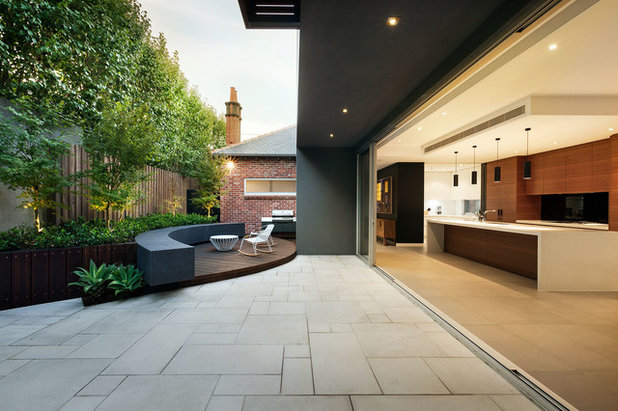
Anston Architectural
Rational design creates functional space. Purely functional design, with no decoration or ornamentation other than the lines of the overall design, is not everyone’s choice. The spaces created reflect their use, and all is rational, with little leeway for imposing imported styles.
Belgian landscape architect Jean Canneel-Claes, one of the early champions of functionalism, stressed the need for creating a seamless transition between inside and outside, and he put his ideas to work when building his own house, with wide windows and glass doors joining interior and exterior spaces. Similarly, expansive sliding glass doors link the garden with the house seen here, creating a wonderful outdoor recreation area.
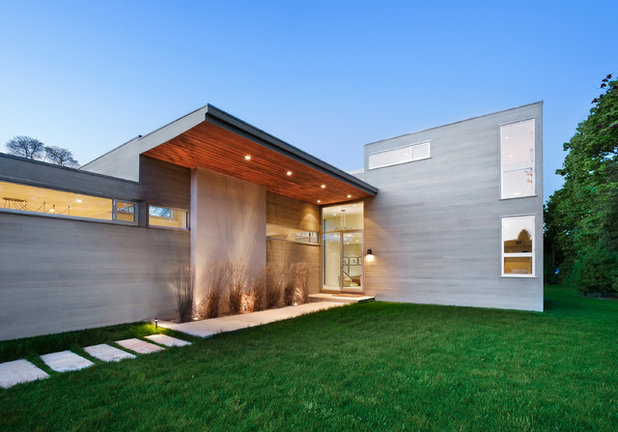
This simple landscape is a testament to form following function. There is no ornamentation; the minimalist planting is used to break up the hard lines of the concrete house. The concrete pathway is utilitarian in nature, leading straight from point A to point B. The paving changes to stepping stones in the grass, a precept that functionalist designers used to blend soft features and hard features. The overall design is unfussy, with no embellishment and with the construction materials fit for the purposes.
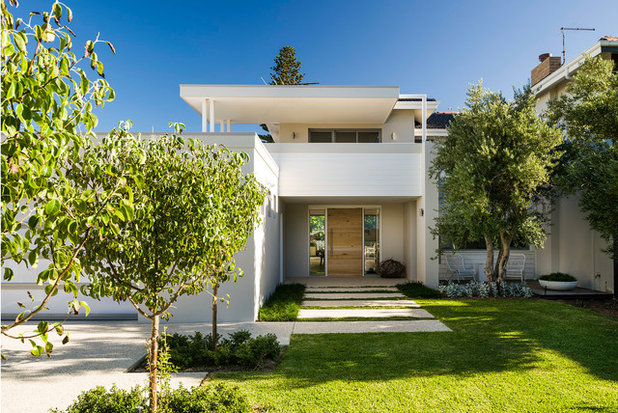
Swell Homes
Following the rule that any decoration in a garden scheme comes from the design itself, this controlled garden shows that functional design doesn’t have to be bland. Wide paths and pavers link the driveway to the front door, and the plantings unite different parts of the garden without overpowering the design.
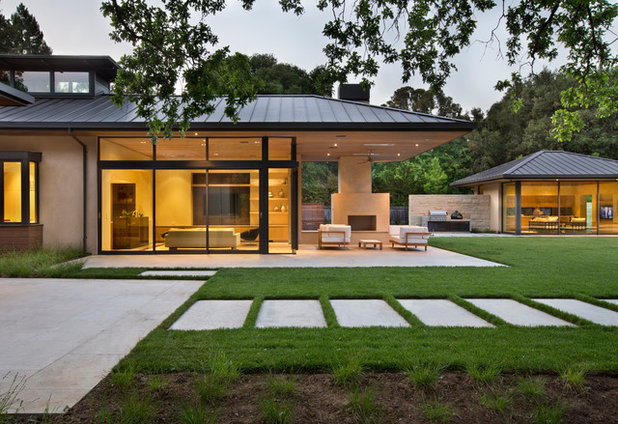
Arcanum Architecture
Function has no need for historical styling. Functional garden design discards decoration as well as historic garden styles of the past, including symmetrical planning and the use of axes. By creating spaces in the garden with a clear use or function, designers don’t think about balancing areas the way they do with formal gardens (such as parterres), in which central paths dissect beds or terraces.
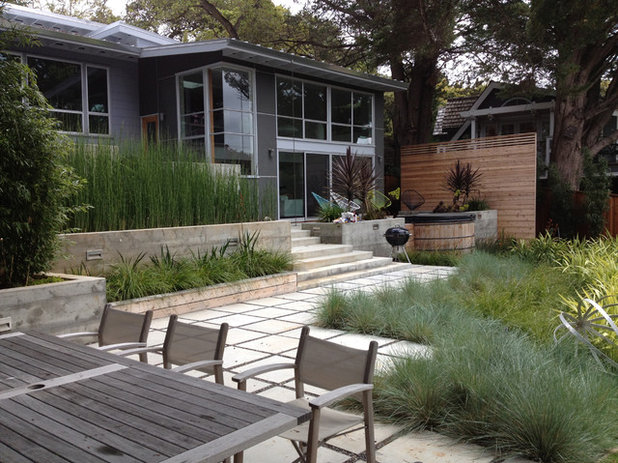
Costello Kennedy Landscape Architecture
Here is a much softer-looking garden that still follows functionalism, with spaces like the hot tub and dining area created for specific uses. The plantings here act as a foil for the hardscape. Early exponents of functionalism thought that personal gardens could be inexpensive and easy-to-maintain recreational facilities as well as places of relaxation, due to their seclusion.
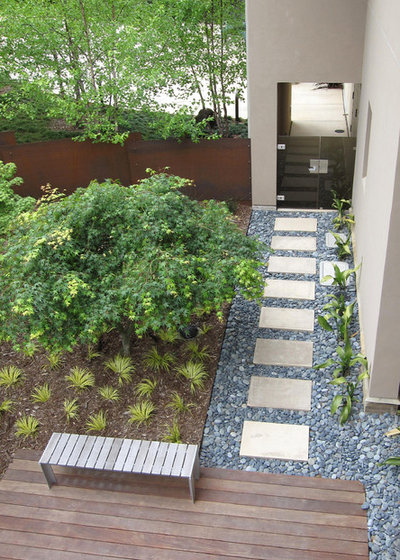
Shades Of Green Landscape Architecture
Link function to function with utilitarian pathways. You would think that by their very nature, paths and steps are functional, yet in many styles of garden design, they are anything but utilitarian. In functional gardens paths and stepping stones almost become catwalks — straight passageways leading directly to another space, not created as a design feature to highlight a distant viewpoint.
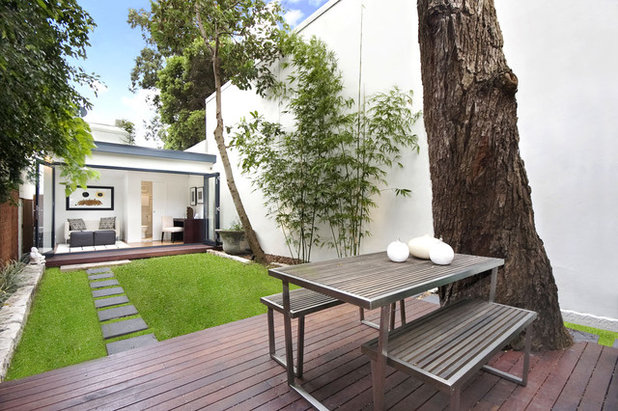
Stepping stones may seem like a mundane feature in garden design, but functional designers like the way those stones can blend with the softer surrounding landscape and really unite the plan. Notice here how a simple run of stepping stones links the house with the back deck.
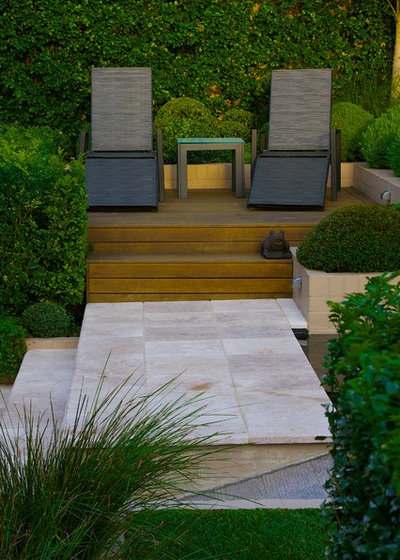
Art in Green
Plantings should be more than just decoration. The early exponents of functional and modernist design were the first to introduce the planting of so-called “architectural” plants — plants that have interesting leaf shapes, colors and textures, with great form and year-round interest. In functional gardens plantings need to be hardy, easily maintained and tolerant of dry sun or wet shade, as they generally tend to be located adjacent to buildings or patios.
I don’t think the plantings surrounding this hardscape can be classified as ornamental or even decorative; they are part of the overall design, maintaining the geometric and rational style and enhancing relaxation through seclusion.
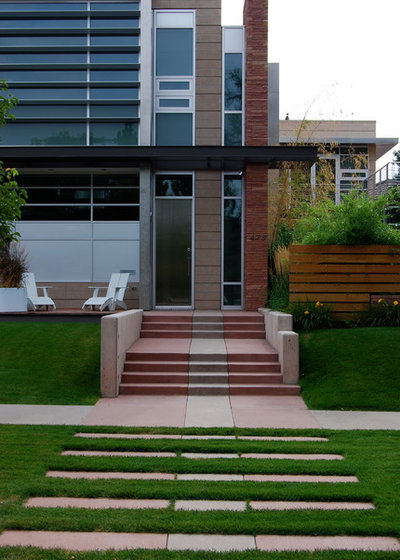
Columbine Design
Here again we see how soft landscaping has been used to complement the building and its surroundings.
The stepping-stone-style paving leading through the grass echoes the steps up to the building and also mirrors the window overhangs. The landscape is simple and functional and allows the design to serve the needs of the owner, without added decoration or unnecessary ornamentation.
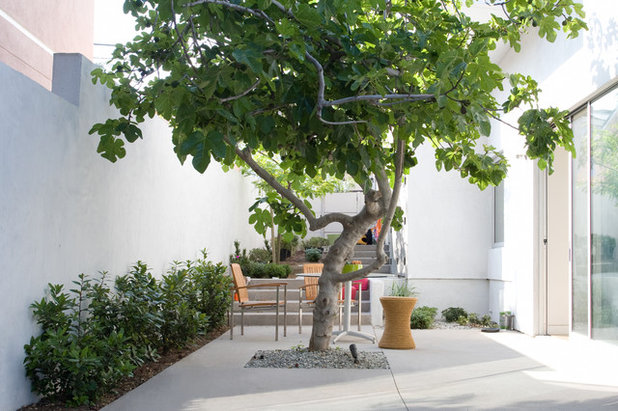
Birte Reimer
The Swedish Garden Architects’ Association’s blueprint for functional garden design pinpoints the way trees should be used. As with the hardscape and other plantings, trees should serve a purpose in the garden, not just be objects of decoration. Trees should provide fruit, either growing in a standard way or espaliered against walls or fences, or should create shade in recreational areas of the garden, as shown here.
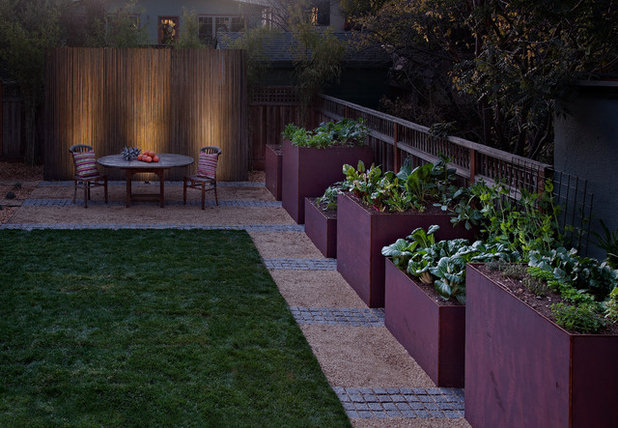
WA Design Architects
With house and garden linked under functional guidelines, areas of the garden can both be the living kitchen larder and allow the owner to relax by reconnecting with the soil. But instead of traditional-style garden beds, there are simple architectural raised beds that are both efficient and functional, making the best use of the space.





